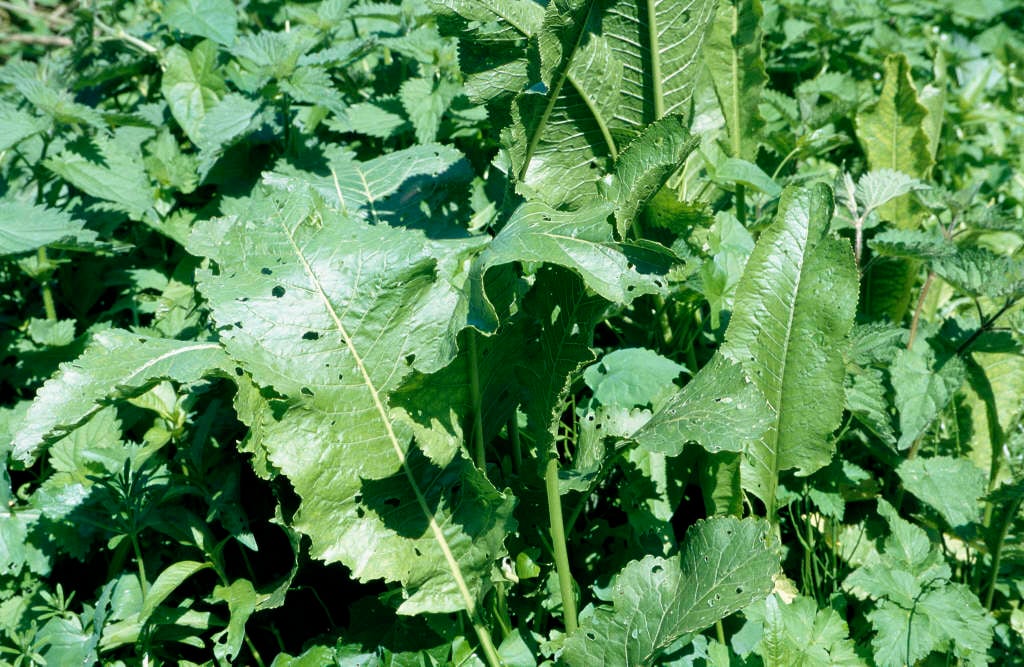Armoracia rusticana
horseradish
A vigorous rhizomatous perennial up to 60 cm tall and 60 cm wide with fleshy, white, pungently aromatic tap-roots. Large, shiny, dock-like leaves die back in winter, but re-shoot from the roots in spring. Panicles of small, white flowers emerge in early summer. The white root is usually harvested in autumn and winter and used grated in horseradish sauce
Synonyms
Brassica amoracia 'Rusticana'Cochlearia armoracia
Size
Ultimate height
0.5–1 metresTime to ultimate height
2–5 yearsUltimate spread
0.1–0.5 metresGrowing conditions
Moisture
Well–drainedpH
Acid, Alkaline, NeutralColour & scent
| Stem | Flower | Foliage | Fruit | |
| Spring | Green | |||
|---|---|---|---|---|
| Summer | White | Green | ||
| Autumn | ||||
| Winter |
Position
- Full sun
- Partial shade
Aspect
South–facing or West–facing
Exposure
Exposed or Sheltered Hardiness
H6Botanical details
- Family
- Brassicaceae
- Native to GB / Ireland
- Yes
- Foliage
- Deciduous
- Habit
- Columnar upright, Clump forming
- Genus
Armoracia are robust upright tap-rooted perennials with simple or pinnately lobed leaves, and small white, 4-petalled flowers in terminal panicles or racemes
- Name status
Correct
- Plant range
- SE Europe
How to grow
Cultivation
Grow in light, fertile and deep, moist but well-drained soil in full sun. Water freely during the growing season. Horseradish will form a vigorous spreading clump, that has the potential to become a nuisance and is hard to remove. Plants grown in pots need to be watered regularly. For more advice, see horseradish cultivation
Propagation
Propagate by seed or by division in winter
Suggested planting locations and garden types
- Wildlife gardens
Pruning
Cut back fades leaves once they die down in late autumn, or before new growth starts in spring
Pests
Generally pest-free
Diseases
May suffer from club root
Get involved
The Royal Horticultural Society is the UK’s leading gardening charity. We aim to enrich everyone’s life through plants, and make the UK a greener and more beautiful place.

